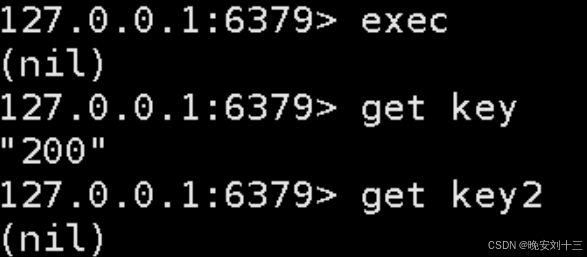我们先回顾一下C文件接口,
#include <stdio.h>
#include <string.h>
int main()
{
FILE *fp = fopen("myfile", "w");
if (!fp)
{
printf("fopen error!\n");
}
const char *msg = "hello world!\n";
int count = 5;
while (count--)
{
fwrite(msg, strlen(msg), 1, fp);
}
fclose(fp);
return 0;
}
stdin & stdout & stderr
C 默认会打开三个输入输出流,分别是 stdin, stdout, stderr仔细观察发现,这三个流的类型都是 FILE*, fopen 返回值类型,文件指针
r Open text file for reading.The stream is positioned at the beginning of the file.r+ Open for reading and writing.The stream is positioned at the beginning of the file.w Truncate( 缩短 ) file to zero length or create text file for writing.The stream is positioned at the beginning of the file.w+ Open for reading and writing.The file is created if it does not exist, otherwise it is truncated.The stream is positioned at the beginning of the file.a Open for appending (writing at end of file).The file is created if it does not exist.The stream is positioned at the end of the file.a+ Open for reading and appending (writing at end of file).The file is created if it does not exist. The initial file positionfor reading is at the beginning of the file,but output is always appended to the end of the file.
如上,是我们之前学的文件相关操作。还有 fseek ftell rewind 的函数。
系统文件I/O
#include <stdio.h>
#include <unistd.h>
#include <sys/types.h>
#include <sys/stat.h>
#include <fcntl.h>
#include <string.h>
int main()
{
umask(0);
int fd = open("myfile", O_WRONLY | O_CREAT, 0644);
if (fd < 0)
{
perror("open");
return 1;
}
int count = 5;
const char *msg = "hello bit!\n";
int len = strlen(msg);
while (count--)
{
write(fd, msg, len); // fd: 后面讲, msg:缓冲区首地址, len: 本次读取,期望写入多少个字节的数
//据。 返回值:实际写了多少字节数据
}
close(fd);
return 0;
}接口介绍
open man open
#include <sys/types.h>
#include <sys/stat.h>
#include <fcntl.h>
int open(const char *pathname, int flags);
int open(const char *pathname, int flags, mode_t mode);
pathname:要打开或创建的目标文件;
flags:打开文件时,可以传入多个参数选项,用下面的一个或者多个常量进行"
或“运算,构成flags。
参数:
open 函数具体使用哪个,和具体应用场景相关,如目标文件不存在,需要 open 创建,则第三个参数表示创建文件的默认权限, 否则,使用两个参数的 open 。
write,read,close,lseek 类比C文件相关接口
open函数返回值
在认识返回值之前,先来认识一下两个概念:系统调用和库函数。
上面的 fopen fclose fread fwrite 都是 C 标准库当中的函数,我们称之为库函数( libc )。而, open close read write lseek 都属于系统提供的接口,称之为系统调用接口回忆一下我们讲操作系统概念时,画的一张图:

文件描述符fd
通过对open函数的学习,我们知道了文件描述符就是一个小整数。
0 & 1 & 2
Linux进程默认情况下会有三个缺省打开的文件描述符,分别是标准输入0,标准输出1,标准错误2;
0,1,2对应的物理设备一般是:键盘,显示器,显示器。
所以输入输出还可以采用如下方式:
#include <stdio.h>
#include <sys/types.h>
#include <sys/stat.h>
#include <fcntl.h>
#include <string.h>
int main()
{
char buf[1024];
ssize_t s = read(0, buf, sizeof(buf));
if (s > 0)
{
buf[s] = 0;
write(1, buf, strlen(buf));
write(2, buf, strlen(buf));
}
return 0;
}
而现在知道,文件描述符就是从 0 开始的小整数。当我们打开文件时,操作系统在内存中要创建相应的数据结构来描述目标文件。于是就有了fifile 结构体。表示一个已经打开的文件对象。而进程执行 open 系统调用,所以必须让进程和文件关联起来。每个进程都有一个指针*fifiles, 指向一张表 fifiles_struct, 该表最重要的部分就是包涵一个指针数组,每个元素都是一个指向打开文件的指针!所以,本质上,文件描述符就是该数组的下标。所以,只要拿着文件描述符,就可以找到对应的文件。
文件描述符的分配规则
#include <stdio.h>
#include <sys/types.h>
#include <sys/stat.h>
#include <fcntl.h>
int main()
{
int fd = open("myfile", O_RDONLY);
if (fd < 0)
{
perror("open");
return 1;
}
printf("fd: %d\n", fd);
close(fd);
return 0;
}#include <stdio.h>
#include <sys/types.h>
#include <sys/stat.h>
#include <fcntl.h>
int main()
{
close(0);
// close(2);
int fd = open("myfile", O_RDONLY);
if (fd < 0)
{
perror("open");
return 1;
}
printf("fd: %d\n", fd);
close(fd);
return 0;
}发现结果是:fd:0或者fd:2可见,文件描述符的分配规则:在files_struct数组当中,找到当前没有被使用的最小的一个下标,作为新的文件描述符。
重定向
那么如果关闭fd1呢???
#include <stdio.h>
#include <sys/types.h>
#include <sys/stat.h>
#include <fcntl.h>
#include <stdlib.h>
int main()
{
close(1);
int fd = open("myfile", O_WRONLY | O_CREAT, 00644);
if (fd < 0)
{
perror("open");
return 1;
}
printf("fd: %d\n", fd);
fflush(stdout);
close(fd);
exit(0);
}此时,我们发现,本来应该输出到显示器上的内容,输出到了文件myfile中,其中,fd=1.这种现象叫做输出重定向。常见的重定向有:>,>>,<
重定向的本质是什么呢?

使用dup2系统调用
函数原型如下:
#include <unistd.h>
int dup2(int oldfd, int newfd);#include <stdio.h>
#include <unistd.h>
#include <fcntl.h>
int main()
{
int fd = open("./log", O_CREAT | O_RDWR);
if (fd < 0)
{
perror("open");
return 1;
}
close(1);
dup2(fd, 1);
for (;;)
{
char buf[1024] = {0};
ssize_t read_size = read(0, buf, sizeof(buf) - 1);
if (read_size < 0)
{
perror("read");
break;
}
printf("%s", buf);
fflush(stdout);
}
return 0;
}

printf 是 C 库当中的 IO 函数,一般往 stdout 中输出,但是 stdout 底层访问文件的时候,找的还是 fd:1, 但此时, fd:1下标所表示内容,已经变成了myfifile 的地址,不再是显示器文件的地址,所以,输出的任何消息都会往文件中写入,进而完成输出重定向。
FILE
因为IO相关函数与系统调用接口对应,并且库函数封装系统调用,所以本质上,访问文件都是通过fd访问的。
所以C库当中的FILE结构体内部,必定封装了fd。
#include <stdio.h>
#include <string.h>
int main()
{
const char *msg0 = "hello printf\n";
const char *msg1 = "hello fwrite\n";
const char *msg2 = "hello write\n";
printf("%s", msg0);
fwrite(msg1, strlen(msg0), 1, stdout);
write(1, msg2, strlen(msg2));
fork();
return 0;
}

- 一般C库函数写入文件时是全缓冲的,而写入显示器是行缓冲。
- printf fwrite 库函数会自带缓冲区(进度条例子就可以说明),当发生重定向到普通文件时,数据的缓冲方式由行缓冲变成了全缓冲。
- 而我们放在缓冲区中的数据,就不会被立即刷新,甚至fork之后
- 但是进程退出之后,会统一刷新,写入文件当中。
- 但是fork的时候,父子数据会发生写时拷贝,所以当你父进程准备刷新的时候,子进程也就有了同样的一份数据,随即产生两份数据。
- write 没有变化,说明没有所谓的缓冲。
理解文件系统

- 模式
- 硬链接数
- 文件所有者
- 组
- 大小
- 最后修改时间
- 文件名
ls -l 读取存储在磁盘上的文件信息,然后显示出来

这个信息除了通过这种方式来读取,还有一个stat命令能够看到更多信息,

上面的执行结果有几个信息需要解释清楚,
inode
为了能解释清楚inode我们先简单了解一下文件系统。

Linux ext2文件系统,上图位磁盘系统图,磁盘是典型的块设备,磁盘分区被划分为一个个block,一个block的大小是由格式化的时候确定的,并且不可以更改。例如mke2fs的-b选项可以设定block大小为1024,2048或者4096字节。
Block Group : ext2 文件系统会根据分区的大小划分为数个 Block Group 。而每个 Block Group 都有着相同的结构组成。政府管理各区的例子超级块( Super Block ):存放文件系统本身的结构信息。记录的信息主要有: bolck 和 inode 的总量,未使用的block 和 inode 的数量,一个 block 和 inode 的大小,最近一次挂载的时间,最近一次写入数据的时间,最近一次检验磁盘的时间等其他文件系统的相关信息。Super Block 的信息被破坏,可以说整个文件系统结构就被破坏了GDT , Group Descriptor Table :块组描述符,描述块组属性信息,有兴趣的同学可以在了解一下块位图(Block Bitmap ): Block Bitmap 中记录着 Data Block 中哪个数据块已经被占用,哪个数据块没有被占用inode 位图( inode Bitmap ):每个 bit 表示一个 inode 是否空闲可用。i 节点表 : 存放文件属性 如 文件大小,所有者,最近修改时间等数据区:存放文件内容
1. 存储属性内核先找到一个空闲的 i 节点(这里是 263466 )。内核把文件信息记录到其中。2. 存储数据该文件需要存储在三个磁盘块,内核找到了三个空闲块: 300,500 , 800 。将内核缓冲区的第一块数据复制到300 ,下一块复制到 500 ,以此类推。3. 记录分配情况文件内容按顺序 300,500,800 存放。内核在 inode 上的磁盘分布区记录了上述块列表。4. 添加文件名到目录新的文件名 abc 。 linux 如何在当前的目录中记录这个文件?内核将入口( 263466 , abc )添加到目录文件。文件名和inode 之间的对应关系将文件名和文件的内容及属性连接起来。
理解硬链接
软链接

ACM
Access 最后访问时间Modify 文件内容最后修改时间Change 属性最后修改时间
动态库和静态库
静态库与动态库
静态库( .a ):程序在编译链接的时候把库的代码链接到可执行文件中。程序运行的时候将不再需要静态库动态库( .so ):程序在运行的时候才去链接动态库的代码,多个程序共享使用库的代码。一个与动态库链接的可执行文件仅仅包含它用到的函数入口地址的一个表,而不是外部函数所在目标文件的整个机器码在可执行文件开始运行以前,外部函数的机器码由操作系统从磁盘上的该动态库中复制到内存中,这个过程称为动态链接(dynamic linking )动态库可以在多个程序间共享,所以动态链接使得可执行文件更小,节省了磁盘空间。操作系统采用虚拟内存机制允许物理内存中的一份动态库被要用到该库的所有进程共用,节省了内存和磁盘空间。
生成静态库
[root@localhost linux]# ls
add.c add.h main.c sub.c sub.h
[root@localhost linux]# gcc -c add.c -o add.o
[root@localhost linux]# gcc -c sub.c -o sub.o
生成静态库
[root@localhost linux]# ar -rc libmymath.a add.o sub.o
ar是gnu归档工具,rc表示(replace and create)
查看静态库中的目录列表
[root@localhost linux]# ar -tv libmymath.a
rw-r--r-- 0/0 1240 Sep 15 16:53 2017 add.o
rw-r--r-- 0/0 1240 Sep 15 16:53 2017 sub.o
t:列出静态库中的文件
v:verbose 详细信息
[root@localhost linux]# gcc main.c -L. -lmymath
-L 指定库路径
-l 指定库名
测试目标文件生成后,静态库删掉,程序照样可以运行。库搜索路径
从左到右搜索 -L 指定的目录。由环境变量指定的目录 ( LIBRARY_PATH )由系统指定的目录
生成动态库
shared: 表示生成共享库格式
fPIC:产生位置无关码(position independent code)
库名规则:libxxx.SO
[root@localhost linux]# gcc -fPIC -c sub.c add.c [root@localhost linux]# gcc -shared -o libmymath.so
*.o [root@localhost linux]# ls add.c add.h add.o libmymath.so main.c sub.c sub.h sub.o使用动态库
编译选项
l :链接动态库,只要库名即可 ( 去掉 lib 以及版本号 )L :链接库所在的路径
gcc main.o main -L. -lhello运行动态库
1 、拷贝 .so 文件到系统共享库路径下 , 一般指 /usr/lib2 、更改 LD_LIBRARY_PATH
[root@localhost linux]# export LD_LIBRARY_PATH=.
[root@localhost linux]# gcc main.c -lmymath
[root@localhost linux]# ./a.out
add(10, 20)=30
sub(100, 20)=80

















